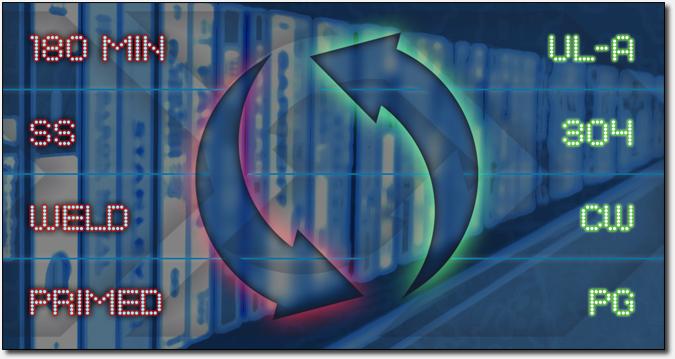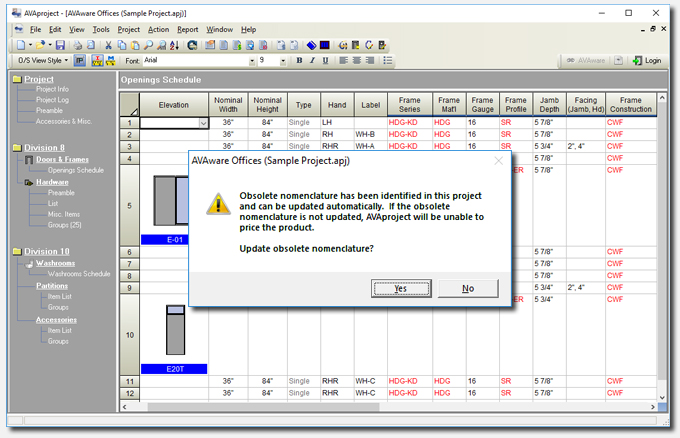|

The 'automated nomenclature update' feature in AVAproject allows estimators and project managers to keep project data consistent with changes to product catalogs.
The last fifteen years have seen an extraordinary amount of change and upheaval in the architectural openings industry. The acquisitions and consolidations of major brands are akin to tectonic shifts that have reshaped the entire commercial landscape. This inevitably resulted in a wide variety of changes to individual product lines, their market positioning and their path through distribution.
Of the many side effects of these dramatic changes is the evolution of nomenclature used to specify and ultimately order architectural products. Nowhere is this more prevalent and apparent than amongst the various hollow metal door and frame manufacturers. While there are certainly variations in the types and range of products offered from one manufacturer to another, there remains a necessary group of core or essential products. Basic frames ranging from the common three-sided to the myriad of side lite and elevation options, are typically offered in similar configurations with nearly identical material selections. The nomenclature used to describe these nearly identical frames varies far more than is generally imagined.
The following are just a few basic examples of such variations amongst leading manufacturers to describe virtually identical options.
|
Ceco |
Curries |
Republic |
Steelcraft |
Mesker |
Pioneer |
De La Fontaine |
Frame Construction (Full Weld) |
V3 |
FW |
CW |
PW |
FTW |
CW |
CFW |
Masonry
Profile |
SU |
M |
M |
F |
F |
SRTN |
SR-D |
Drywall
Profile |
DU |
C |
D |
DW |
FDJ |
SRTN |
DW-D |
Fire Label
(3 hour) |
AU |
UL-A |
UL-A |
UL-A |
UL-A |
ULA |
180 |
Polystyrene Door Core |
POLYS |
POLYS |
INS |
POLYS |
P |
HP |
PS |
Polyurethane Door Core |
POLYU |
POLYU |
URT |
POLYU |
U |
HT |
PU |
While the variations in the nomenclature are readily apparent and generally understandable, it does present a challenge when having to translate the various option codes in the context of a large openings schedule. Even beyond the differences that existed between manufacturers, nomenclature codes are often modified each time a brand is brought under new ownership. This leaves estimators and project managers in the unenviable position of having to update the nomenclature used throughout their schedules - unless of course they're using AVAproject.
AVAproject contains a facility that can automatically cross translate or update obsolete nomenclature for supported catalogs. This facility is built upon a feature of the AVAproject door and frame catalogs, and allows older or alternate nomenclature codes to be defined for any existing ones. When options codes are updated within a catalog, the old or obsolete code is retained and used to automatically update project files to the newer nomenclature.
When such a project is opened in AVAproject, the openings schedule is immediately scanned. Any nomenclature used on openings that are associated with AVAware compatible door and frame catalog is validated, with unrecognized codes identified in red. When specific codes are recognized as obsolete, having been used in previous version of the catalog in question, an option is given to "Update obsolete nomenclature?"

When answered in the affirmative, AVAproject will replace the obsolete codes with their current counterparts.
The AVAware catalog development team has been working towards bringing this functionality to the most popular catalog offerings, ensuring that project files are always updated with the most current nomenclature and option codes.
|